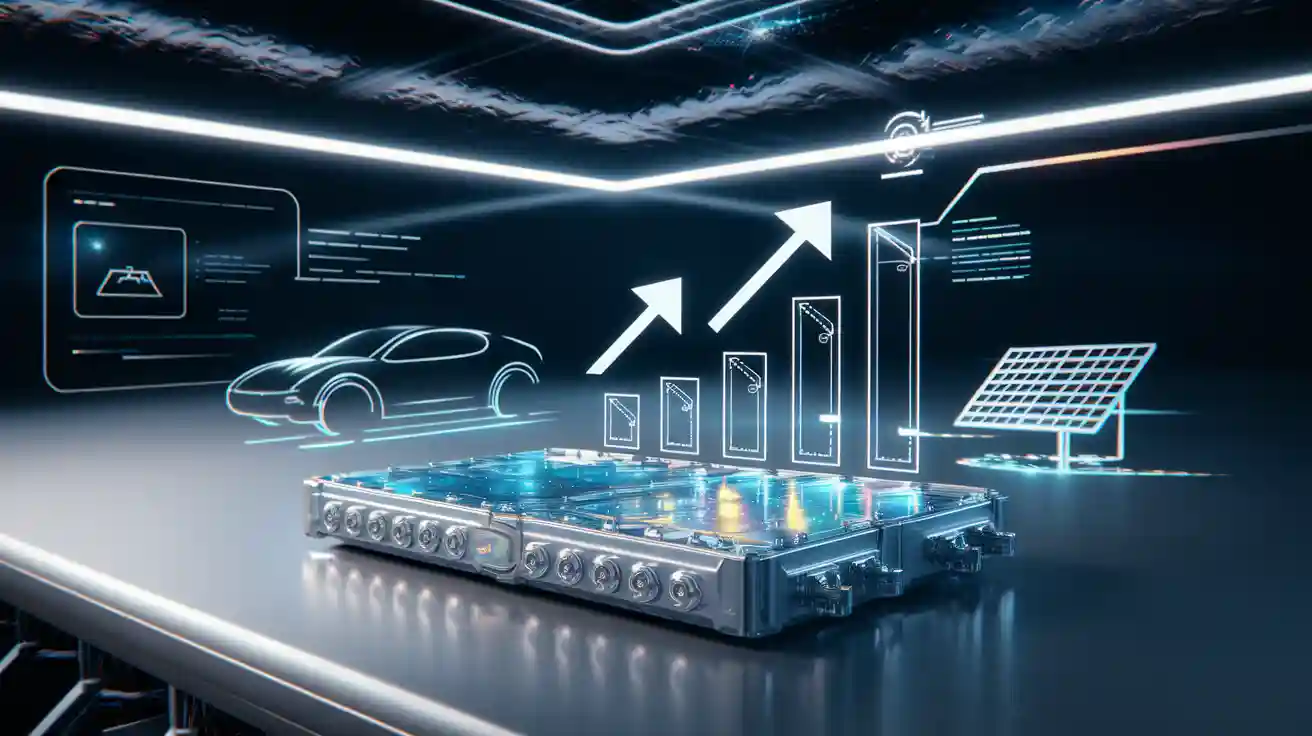Why Lithium Iron Phosphate Battery Technology Is Surging in Popularity?
You see lithium iron phosphate batteries gaining popularity because they deliver a unique blend of safety, long lifespan, and reliable performance. LiFePO4 batteries feature superior thermal stability and a robust structure, which lowers the risk of fire and extends their lifespan to 2,000–5,000 charge cycles.
- The global lithium iron phosphate battery market reached USD 18.7 billion in 2024, with a projected CAGR of 16.9% from 2025 to 2034.
- Major factors driving this growth include rising demand for electric vehicles and expanded use in renewable energy storage.
Key Takeaways
- Lithium iron phosphate batteries offer exceptional safety due to their high thermal stability, making them ideal for electric vehicles and energy storage.
- These batteries have a long lifespan, lasting between 2,000 to 5,000 charge cycles, which reduces replacement frequency and saves you money.
- Fast charging capabilities allow you to recharge lithium iron phosphate batteries in just 1 to 2 hours, providing convenience for your energy needs.
- Choosing lithium iron phosphate batteries supports environmental sustainability, as they use non-toxic materials and are easier to recycle.
- The growing market for lithium iron phosphate batteries reflects their cost-effectiveness and reliability, making them a smart choice for various applications.
Safety of Lithium Iron Phosphate Battery
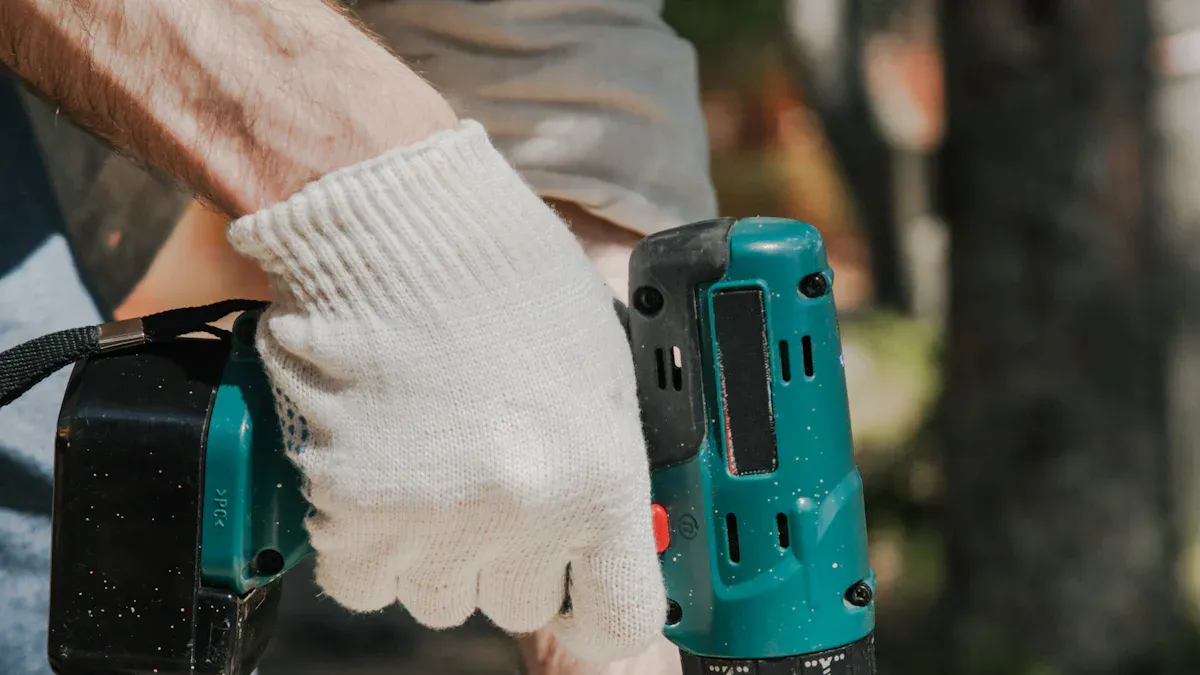
Thermal Stability
You benefit from enhanced safety when you choose a lithium iron phosphate battery. The stability of this chemistry stands out in the industry. You can rely on these batteries because they resist thermal runaway, a dangerous chain reaction that can lead to overheating or fire. This stability makes them ideal for applications where safety is critical, such as electric vehicles and home energy storage.
- LiFePO4 batteries withstand temperatures up to 270°C, much higher than other battery types.
- The olivine crystal structure gives you higher thermal resistance compared to oxide-based lithium alternatives.
- These batteries require nearly triple the energy (700°C) to trigger reactions compared to NMC batteries, ensuring greater thermal stability.
- You can operate them reliably from -20°C to 60°C with minimal capacity loss.
- The Blade Battery, a type of lithium iron phosphate battery, shows minimal temperature rise during nail penetration tests, while other chemistries often experience thermal runaway.
You see enhanced safety features such as high auto-ignition temperatures and non-combustible electrolyte additives. The material retains oxygen, which prevents sustained fires and adds another layer of stability.
Fire Resistance
Enhanced safety also comes from the fire resistance of lithium iron phosphate batteries. The strong covalent bonds between phosphorus and oxygen in the battery’s structure make it difficult for the material to break down and release oxygen. This stability is a key reason why you see fewer fire incidents with these batteries.
Note: The stability of lithium iron phosphate batteries means you can trust them in demanding environments, even under stress or accidental damage.
Here is a quick comparison of fire resistance in real-world and laboratory conditions:
| Condition | Result |
|---|---|
| Stored at 2.3 V | No change in cell capacity after 90 days; negligible resistance rise. |
| External short-circuit test | Surface temperature rise of only 6°C; higher voltage cells showed sparks, fumes, and fire. |
You gain peace of mind knowing that enhanced safety and stability are built into every lithium iron phosphate battery you use.
Lifespan and Durability of LiFePO4 Batteries
Cycle Life
You experience a longer lifespan when you choose LiFePO4 batteries for your energy needs. These batteries deliver impressive cycle life, which means you can charge and discharge them thousands of times before noticing significant capacity loss. The chemistry inside LiFePO4 batteries resists degradation, so you get more years of reliable service compared to other battery types.
Take a look at how LiFePO4 batteries compare to other common batteries:
| Battery Type | Typical Cycle Life (at 100% DoD) | Typical Cycle Life (at 50% DoD) |
|---|---|---|
| Lithium Iron Phosphate (LiFePO4) | 2000-4000+ cycles | 6000-8000+ cycles |
| Lead-Acid | 300-500 cycles | 600-1000 cycles |
| Lithium Nickel Manganese Cobalt Oxide (NMC) | 1000-2000 cycles | 3000-5000 cycles |
| Lithium Cobalt Oxide (LCO) | 500-1000 cycles | 1500-2500 cycles |
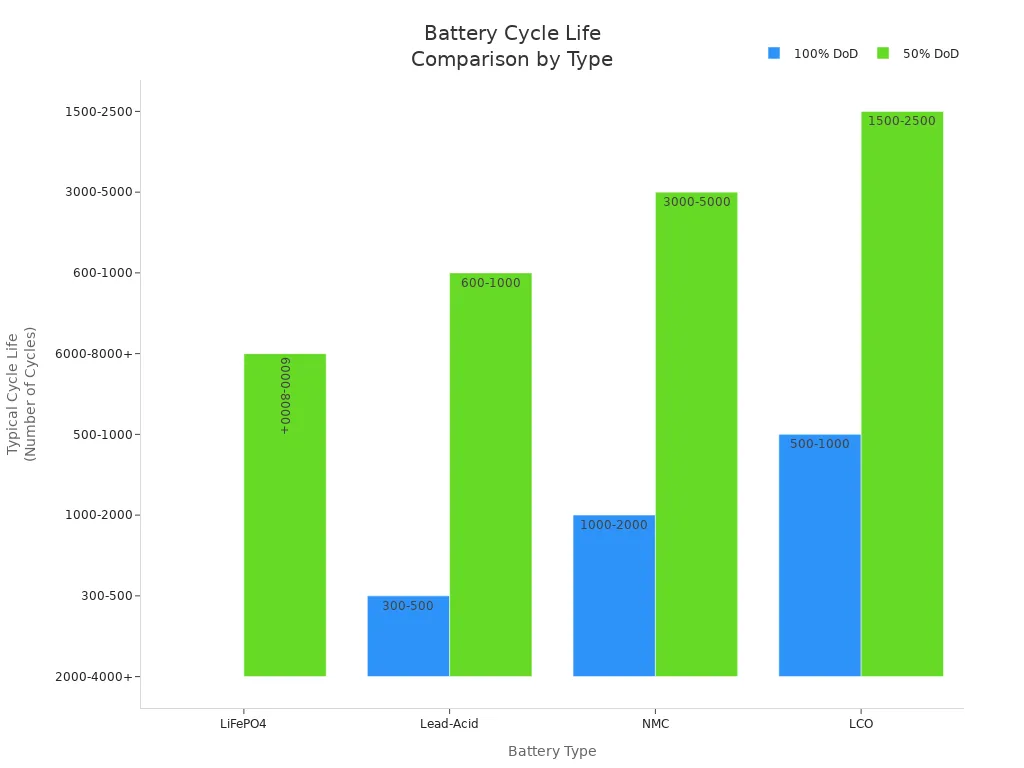
You see that LiFePO4 batteries offer a much longer lifespan than lead-acid or other lithium-ion batteries. This longer lifespan means you replace batteries less often, saving you time and money.
Tip: If you want a battery that lasts for years in demanding applications, LiFePO4 batteries provide the durability you need.
Reliability
You rely on LiFePO4 batteries for consistent performance in high-demand environments. These batteries maintain their capacity and efficiency even after thousands of cycles. You benefit from their stable chemistry, which reduces the risk of overheating and combustion. This reliability makes LiFePO4 batteries ideal for electric vehicles, solar energy storage, and industrial machinery.
- LiFePO4 batteries have a superior safety profile, so you can trust them in automotive and energy storage systems.
- Technological advancements have boosted the energy density and lifespan of LiFePO4 batteries, making them suitable for industrial and consumer electronics.
- Their long lifespan and high charge-discharge efficiency support large-scale energy storage, helping stabilize power grids and integrate renewable energy.
You get peace of mind knowing your batteries will perform reliably, even in tough conditions. LiFePO4 batteries deliver a longer lifespan and unmatched durability, making them a smart choice for your energy solutions.
Charging and Performance
Fast Charging
You want your devices ready when you need them. Lithium iron phosphate batteries deliver fast charging capabilities that set them apart from traditional options. You can recharge these batteries at rates from 0.5C to 1C, which means you often wait just 1 to 2 hours for a full charge. When you compare this to lead-acid batteries, which need 8 to 12 hours, you see a clear advantage.
- You benefit from fast charging capabilities that allow you to get back to work or play quickly.
- These batteries can handle even higher charge rates, sometimes up to 2C, so you can recharge in less than an hour if needed.
- You have the flexibility to choose a slower charge for longer battery life or a faster charge when time matters.
- Lithium-ion batteries also offer fast charging capabilities, but they often come with safety concerns like overheating.
Tip: Fast charging capabilities make lithium iron phosphate batteries ideal for electric vehicles, solar generators, and backup power systems where downtime is not an option.
You gain peace of mind knowing your battery will not only charge quickly but also stay safe during the process.
Consistent Output
You rely on consistent power for your equipment and devices. Lithium iron phosphate batteries provide a stable voltage output throughout most of their discharge cycle. This means your devices operate efficiently, without sudden drops or power fluctuations.
- These batteries deliver consistent performance, even under demanding conditions.
- You can trust your equipment to run smoothly, whether you use the battery for home energy storage, industrial machines, or electric vehicles.
- The stable output ensures sensitive electronics remain protected and efficient.
Note: Consistent output from lithium iron phosphate batteries supports reliable operation in critical applications, giving you confidence in your power supply.
You experience fewer interruptions and better performance, thanks to the advanced design and fast charging capabilities of these batteries.
Environmental Impact
Eco-Friendly Materials
You make a positive choice for environmental sustainability when you select lithium iron phosphate batteries for your energy storage solutions. These batteries use non-toxic materials and avoid harmful heavy metals like cobalt, lead, or cadmium. This design reduces the environmental impact of mining and manufacturing. You also benefit from a longer battery lifespan, which means you replace batteries less often and reduce waste.
Here is a comparison of lithium iron phosphate batteries and traditional lithium-ion batteries:
| Advantage | Lithium Iron Phosphate (LiFePO4) | Traditional Lithium-Ion Batteries |
|---|---|---|
| Safety | Excellent thermal stability | Higher risk of overheating |
| Lifespan | 2,000 to 3,000+ charge cycles | 500 to 1,000 charge cycles |
| Environmental Impact | Lower due to non-toxic materials | Higher due to cobalt and nickel |
| Cost-Effectiveness | More economical | More expensive due to rare materials |
You see that lithium iron phosphate batteries offer better thermal stability and a longer lifespan. These eco-friendly properties support environmental sustainability by reducing the need for frequent replacements and minimizing hazardous waste. You help protect the environment each time you choose these batteries for your energy storage solutions.
Recycling
You play a key role in environmental sustainability when you recycle your batteries. Lithium iron phosphate batteries support easier recycling because they do not contain toxic metals. While global recycling rates for lithium-ion batteries range from 2% to 47%, the need for recycling continues to grow as energy storage solutions expand. You help reduce emissions and conserve resources by recycling your batteries instead of sending them to landfills.
- You reduce the demand for new raw materials.
- You lower the environmental impact of mining.
- You support a cleaner future for energy storage solutions.
Tip: Always check local recycling programs for proper battery disposal. Responsible recycling ensures that your energy storage solutions remain sustainable and safe for the environment.
Cost Benefits
Total Ownership Cost
You want to maximize cost-effectiveness when investing in energy storage. Lithium iron phosphate batteries deliver the lowest total cost of ownership compared to other battery types. You save money over time because these batteries last longer and require fewer replacements. The table below highlights how lithium iron phosphate batteries outperform AGM/Gel and Flooded batteries in terms of cost-effectiveness and longevity:
| Battery Type | Total Cost of Ownership (TCO) | Cycle Life (Cycles) | Replacement Frequency (over 10 years) |
|---|---|---|---|
| Lithium Iron Phosphate (LiFePO4) | Lowest | ~4000 | 1 |
| AGM/Gel | Higher | ~500 | 6-11 |
| Flooded | Highest | ~300 | 6-11 |
You only need one lithium iron phosphate battery over a decade, while lead-acid batteries require up to eleven replacements. This cost-effectiveness means you spend less on maintenance and replacements. You benefit from a 64% lower total cost of ownership compared to AGM/Gel batteries and a 75% lower cost compared to Flooded batteries. You also enjoy up to 4,000 cycles, which translates to about eleven years of reliable service.
Tip: Choosing lithium iron phosphate batteries helps you reduce long-term expenses and avoid frequent battery changes.
Market Value
You see the market value for lithium iron phosphate batteries rising rapidly. The global market reached $15.28 billion in 2023 and is projected to grow at a compound annual growth rate of 25.62%. By 2032, experts expect the market to hit $124.42 billion. This surge reflects strong demand for cost-effectiveness in electric vehicles and renewable energy storage. You notice that the Asia Pacific region leads the market, with a value of $7.65 billion in 2023.
- The lithium iron phosphate battery market has grown significantly over the past five years.
- Electric vehicles and renewable energy sectors drive this expansion.
- You benefit from advanced technology and lower costs as the market grows.
You gain confidence knowing that lithium iron phosphate batteries offer proven cost-effectiveness and strong market value. If you have questions about choosing the right battery for your needs, reach out to our team for expert advice.
Lithium Iron Phosphate Batteries vs. Other Chemistries
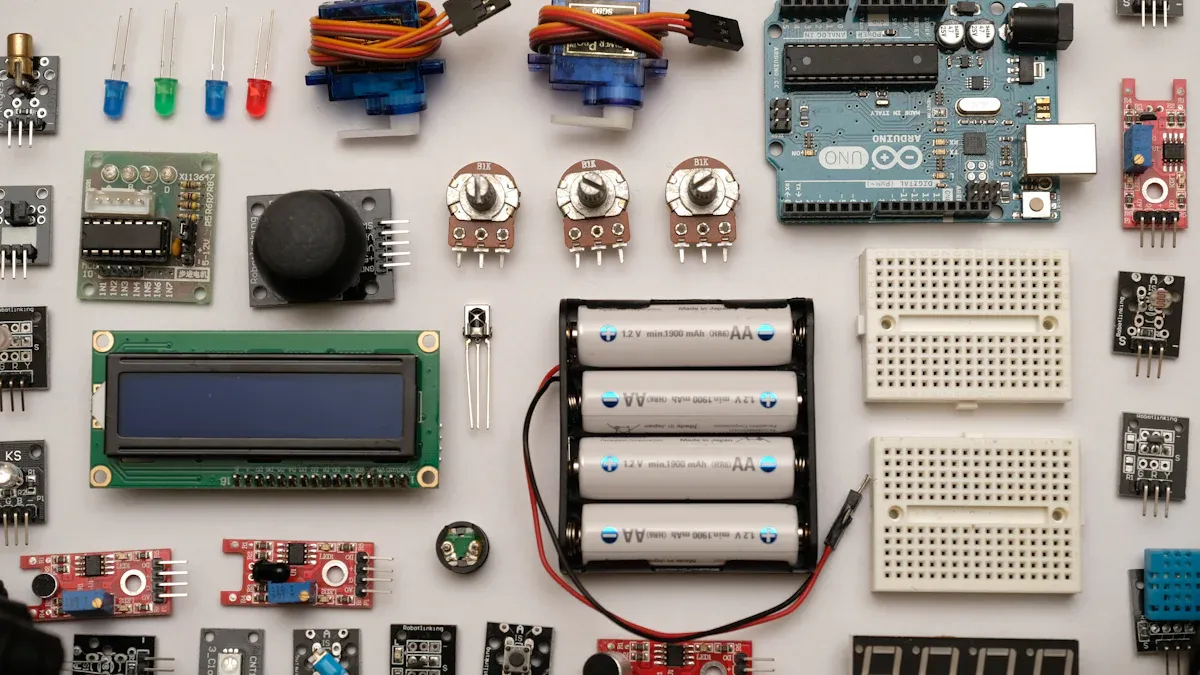
LiFePO4 vs. Lithium-Ion
When you compare lifepo4 batteries to other lithium-ion chemistries, you notice clear differences in safety, lifespan, and cost. Lifepo4 batteries stand out for their high resistance to thermal runaway. You can trust these batteries in demanding environments because they are less likely to overheat or catch fire. The table below highlights the safety features:
| Battery Type | Safety Features |
|---|---|
| Lithium Iron Phosphate (LiFePO4) | Highly resistant to thermal runaway, less prone to overheating or catching fire. |
| Lithium Phosphate | Generally safe, but performance can vary based on specific chemistry used. |
You benefit from a longer lifespan with lifepo4 batteries. These batteries typically last between 2,000 and 5,000 charge cycles, while other lithium phosphate batteries have a shorter lifespan. Although lifepo4 batteries cost more upfront, you gain value over time. Their durability makes them ideal for electric vehicles and solar power storage.
- Lifepo4 batteries offer a longer service life, reducing replacement frequency.
- You experience fewer safety concerns, especially in high-temperature conditions.
- The higher initial investment pays off through years of reliable use.
Note: Lifepo4 batteries provide peace of mind and long-term savings, making them a smart choice for critical applications.
LiFePO4 vs. Lead-Acid
Lifepo4 batteries outperform lead-acid batteries in almost every category. You see major advantages in efficiency, maintenance, and environmental impact. The following table summarizes key differences:
| Aspect | Lithium Iron Phosphate (LiFePO4) | Lead-Acid Batteries |
|---|---|---|
| Toxic Material Content | Fewer toxic materials | Higher toxic materials |
| Lifespan | Longer lifespan | Shorter lifespan |
| Waste Generation | Less frequent replacement | More frequent replacement |
| Greenhouse Gas Emissions | Lower emissions | Higher emissions |
| Ecological Risk | 85% reduced contamination risk | Higher contamination risk |
You benefit from higher energy efficiency during charging and discharging cycles. Lifepo4 batteries lose less energy and produce fewer carbon emissions. Their lighter weight also helps you save energy in mobile applications.
- Lifepo4 batteries require almost no maintenance.
- Lead-acid batteries need regular checks and cleaning.
- You reduce waste and lower your environmental footprint by choosing lifepo4 batteries.
Tip: If you want a battery that is efficient, eco-friendly, and easy to maintain, lifepo4 batteries deliver unmatched performance.
You can always reach out to our team if you have questions about which battery best fits your needs.
Gaining Popularity in Real-World Applications
Lithium iron phosphate batteries are gaining popularity across many industries. You see lifepo4 batteries powering electric vehicles, supporting renewable energy storage, and driving efficiency in industrial equipment. Their safety, long cycle life, and cost-effectiveness make them the preferred choice for high-performance energy storage.
Electric Vehicles
You notice a rapid shift toward lifepo4 batteries in the electric vehicle market. Manufacturers like Tesla, BYD, and CATL have adopted lithium iron phosphate battery technology for their standard-range models. Ford also uses these batteries in select vehicles. The reasons for this trend include:
- Cost-effectiveness, which makes electric vehicles more affordable for you.
- Longer lifespan, allowing you to drive farther with fewer battery replacements.
- Safety, with lifepo4 batteries resisting thermal runaway at temperatures up to 270°C.
- Environmental benefits, as these batteries produce 15-25% lower carbon emissions and avoid ethical concerns linked to cobalt and nickel mining.
You benefit from reliable performance and lower maintenance costs. Lifepo4 batteries now power a significant percentage of new electric vehicles, reflecting their growing market share.
Tip: If you want an electric vehicle with dependable range and safety, look for models equipped with lithium iron phosphate batteries.
Energy Storage
You rely on lifepo4 batteries for energy storage systems in homes, businesses, and utility-scale projects. These batteries offer high energy density, long cycle life, and stable chemical structure. You can scale energy storage solutions to fit your needs, from small home batteries to large solar farms.
- Residential solar generators in California use lithium iron phosphate batteries to provide backup power during outages.
- Large solar farms in Australia have adopted lifepo4 batteries, improving grid stability and renewable energy utilization.
- Home and commercial energy storage markets are expanding rapidly, driven by the need for dependable systems that balance intermittent sources like solar and wind.
The market for lithium iron phosphate batteries in energy storage systems continues to grow. You see these batteries as essential for integrating renewable energy and ensuring a stable power supply.
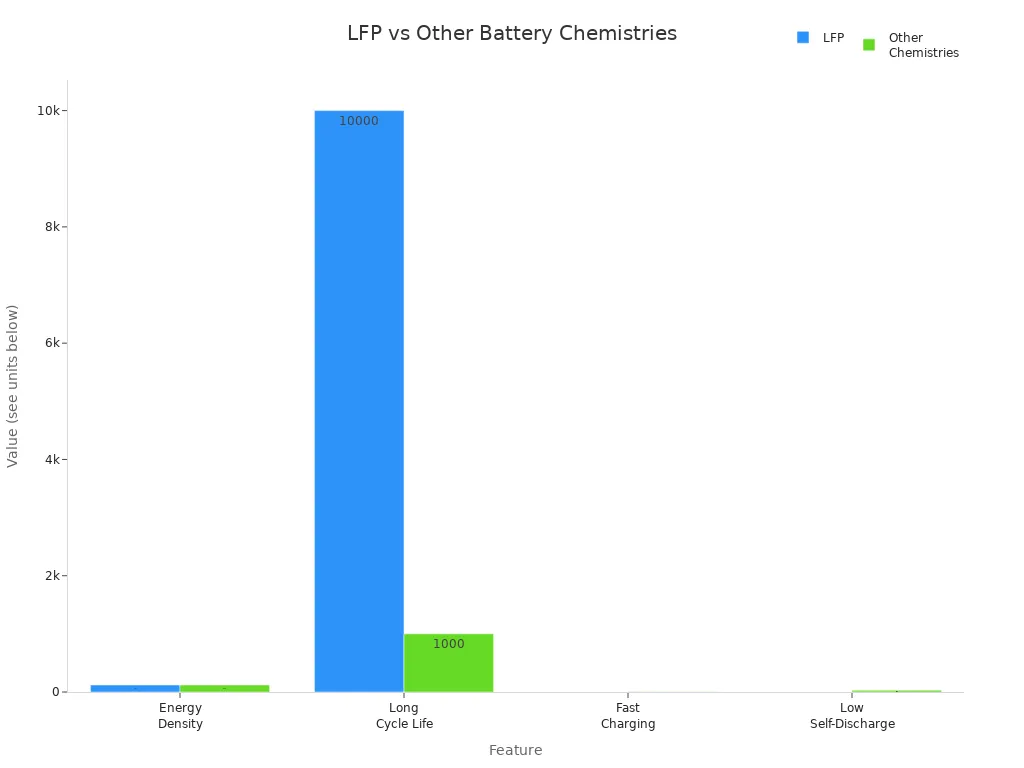
Note: Lifepo4 batteries help you achieve energy independence and reduce your carbon footprint.
Industrial Uses
You find lifepo4 batteries transforming industrial operations. Material handling sectors use these batteries in forklifts, automated guided vehicles, and utility vehicles. You experience faster charging, with many batteries reaching full capacity in under two hours. This rapid charging enables opportunity charging during breaks, eliminating the need for battery swaps and reducing downtime.
| Industrial Sector | Primary Use Cases |
|---|---|
| Material Handling | Forklifts, Automated Guided Vehicles, Utility Vehicles |
| Electric Vehicles | Powering electric vehicles |
| Renewable Energy Systems | Integration with photovoltaic cells |
| Consumer Electronics | Various electronic devices |
You benefit from consistent power output, ergonomic battery design, and integrated battery management systems that enhance safety and efficiency. Lifepo4 batteries last between 3,000 to 5,000 cycles, far outpacing lead-acid batteries. You see these batteries used in bicycles, home battery systems, and consumer electronics due to their reliability and energy efficiency.
The industrial market for lithium iron phosphate batteries is expanding. Market projections show growth from $1.23 billion in 2024 to $2.48 billion by 2034, with a compound annual growth rate of 7.3%. You can expect lifepo4 batteries to play a larger role in high-performance energy storage and industrial automation.
| Year | Market Value (USD) | CAGR (%) |
|---|---|---|
| 2024 | 1.23 billion | N/A |
| 2025 | 1.32 billion | N/A |
| 2034 | 2.48 billion | 7.3 |
Callout: Lifepo4 batteries deliver operational efficiency, safety, and long-term savings for your industrial applications.
Real-World Examples
You see lithium iron phosphate batteries in action across many real-world scenarios:
- Solar generators and backup energy systems in homes and businesses.
- Electric vehicles from leading manufacturers.
- Forklifts and warehouse equipment, where rapid charging and long cycle life boost productivity.
- Bicycles and home battery systems, providing reliable and efficient power.
Manufacturers and end-users choose lifepo4 batteries for their energy density, fast charging, low self-discharge, and environmental friendliness. You gain lighter batteries, accurate state-of-charge indicators, and reduced operational costs.
Note: While lifepo4 batteries offer many advantages, you should consider challenges such as lower energy density, performance in cold climates, and initial cost. Compatibility with existing systems may also require careful planning.
You can reach out to our team for guidance on selecting the best lithium iron phosphate battery for your energy storage solutions or industrial needs.
You see lithium iron phosphate batteries gaining popularity because they offer unmatched safety, long lifespan, and reliable performance. The table below highlights how these benefits drive adoption:
| Benefit | Contribution to Popularity |
|---|---|
| Safety | Reduced risk of thermal runaway, ideal for safety-critical applications |
| Longevity | Over 2,000 cycles, lowering maintenance costs and improving reliability |
| Performance | Stable output under various conditions, preferred across industries |
Looking ahead, you can expect rapid market growth as advancements in technology and manufacturing lower costs and improve battery consistency.
- Demand for electric vehicles and renewable energy storage continues to rise.
- Companies focus on recycling and strategic partnerships to ensure a sustainable supply chain.
- Innovations in energy density and battery management systems make these batteries more competitive.
You benefit from a future where lithium iron phosphate batteries power more vehicles, homes, and industries, supporting a cleaner and more efficient world.
FAQ
What makes lithium iron phosphate batteries safer than other types?
You benefit from lithium iron phosphate batteries because they resist overheating and fire. Their stable chemistry lowers the risk of thermal runaway, making them ideal for electric vehicles and home energy storage.
How long does a lithium iron phosphate battery last?
You can expect a lithium iron phosphate battery to last over 2,000 charge cycles. Many users report reliable performance for up to ten years with proper maintenance.
Can you use lithium iron phosphate batteries in cold climates?
You can use these batteries in cold climates. They operate reliably from -20°C to 60°C. You may notice reduced capacity in extreme cold, but performance remains stable compared to other battery types.
Are lithium iron phosphate batteries environmentally friendly?
You make an eco-friendly choice with these batteries. They contain no toxic metals and support easier recycling. Their long lifespan reduces waste and environmental impact.
Where can you use lithium iron phosphate batteries?
You find these batteries in electric vehicles, solar generators, backup energy systems, forklifts, and home battery storage. Their safety and reliability support many industrial and residential applications.
-

 May.2025.11.24Ternary Lithium Battery vs Lithium-ion: Complete Comparison Guide (2025 Edition)Learn More
May.2025.11.24Ternary Lithium Battery vs Lithium-ion: Complete Comparison Guide (2025 Edition)Learn More -

 May.2025.11.214S2P 18650 14.8V Battery: Complete Technical Guide, Specs, Applications & SafetyLearn More
May.2025.11.214S2P 18650 14.8V Battery: Complete Technical Guide, Specs, Applications & SafetyLearn More -

 May.2025.11.18PCM vs BMS in Lithium Batteries: What’s the Difference and Which One Do You Need?Learn More
May.2025.11.18PCM vs BMS in Lithium Batteries: What’s the Difference and Which One Do You Need?Learn More -

 May.2025.11.17Custom Li-ion Battery Design for Medical Devices (2025 Comprehensive Guide)Learn More
May.2025.11.17Custom Li-ion Battery Design for Medical Devices (2025 Comprehensive Guide)Learn More -

 May.2025.11.17The Future of Lithium-Ion Batteries: Innovation, Sustainability, and Global Market TrendsLearn More
May.2025.11.17The Future of Lithium-Ion Batteries: Innovation, Sustainability, and Global Market TrendsLearn More
















